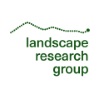Understanding the Global Cold War Legacy: Narrating through Landscape
DOI:
https://doi.org/10.34900/lr.v9i1.193Abstract
The end of the Cold War brought the shrinking and dismantling of vast nuclear weapons complexes. As a result, some landscape architects will find themselves reclaiming a new, very specific type of Cold War landscape: those degraded by nuclear arms testing, production and waste storage. Nuclear landscapes pose multiple and complex challenges. Before designing nuclear reclamations, one must ask: what are the issues? If designers misunderstand the nuclear landscape 'problem', it will be 'solved' in the wrong way. My position is based on the assumption that society desires these landscapes to be reclaimed safely and in ways that allow them to educate the public. Landscape architects can find ways to reclaim nuclear landscapes safely while leaving narratives for generations to come. Perhaps it is too early to describe how nuclear reclamations will look. It is not too early to discuss what designs for nuclear reclamations should accomplish. This paper raises questions critical to the design of nuclear reclamations, both globally and locally. Near precedents - past reclamations that narrate other types of degraded landscapes - are discussed, and it is noted how we can learn from them when considering nuclear landscape reclamation. This paper does not articulate a specific design theory or solution to Cold War nuclear landscapes, but rather, it seeks to pose critical questions that designers should ask. These questions will be broad because we consider nuclear landscapes globally. The questions will require in-depth investigation of local issues as each unique nuclear landscape is considered.Downloads
Download data is not yet available.
Published
01-06-2004
How to Cite
Klein, M. (2004). Understanding the Global Cold War Legacy: Narrating through Landscape . Landscape Review, 9(1), 143–148. https://doi.org/10.34900/lr.v9i1.193
Issue
Section
Peer reviewed papers featured in roundtable sessions
License
Authors who publish with this journal agree to the following terms:- Authors retain copyright and grant the journal right of first publication with the work simultaneously licensed under a Creative Commons Attribution License that allows others to share the work with an acknowledgement of the work's authorship and initial publication in this journal.
- Authors are able to enter into separate, additional contractual arrangements for the non-exclusive distribution of the journal's published version of the work (e.g., post it to an institutional repository or publish it in a book), with an acknowledgement of its initial publication in this journal.
- Authors are permitted and encouraged to post their work online (e.g., in institutional repositories or on their website) prior to and during the submission process, as it can lead to productive exchanges, as well as earlier and greater citation of published work (See The Effect of Open Access).


